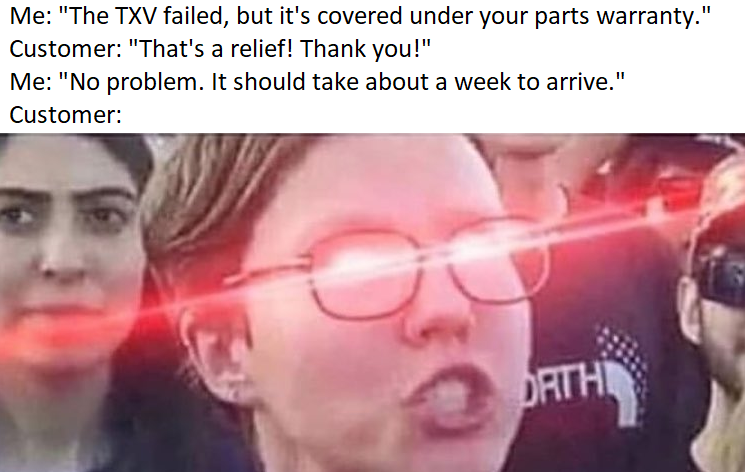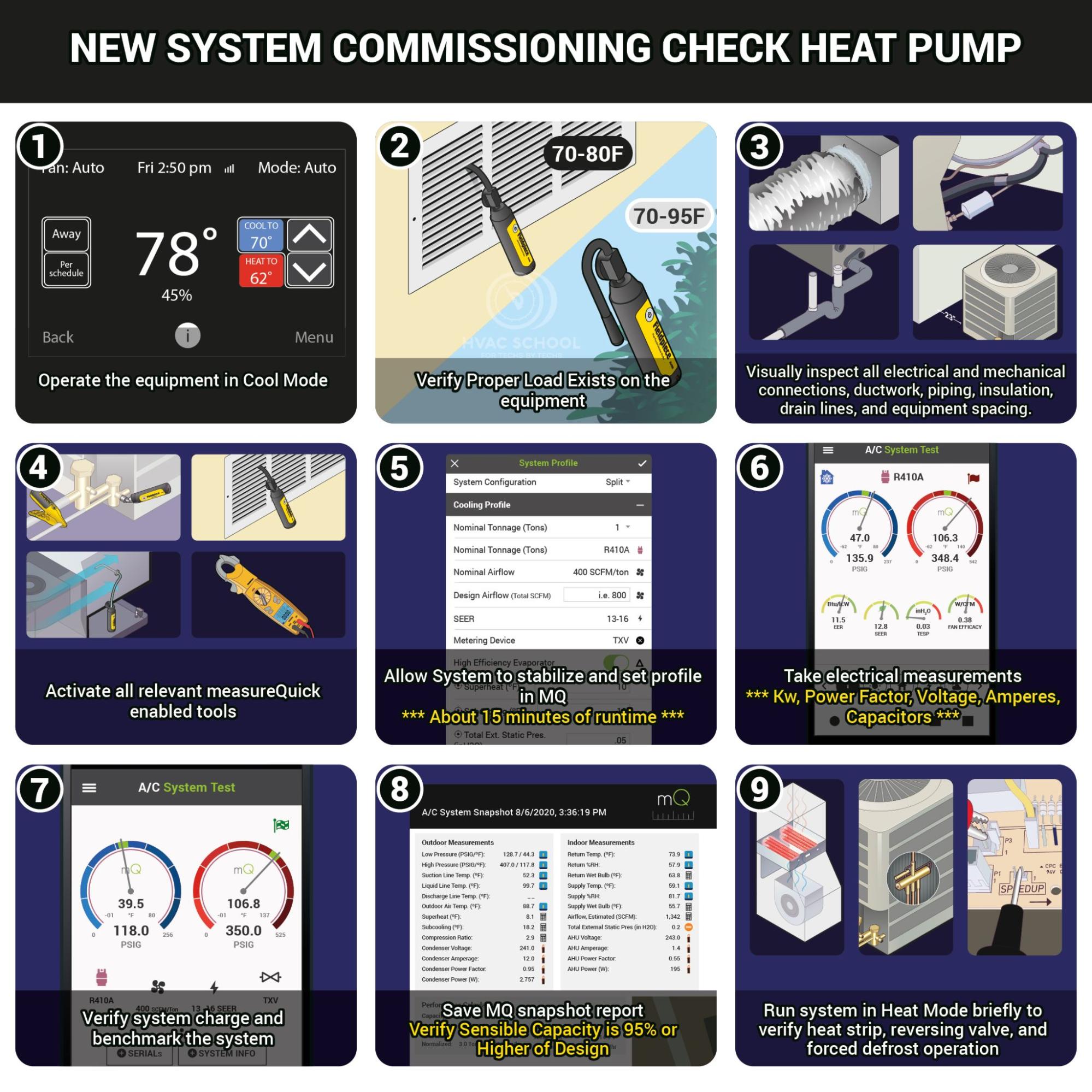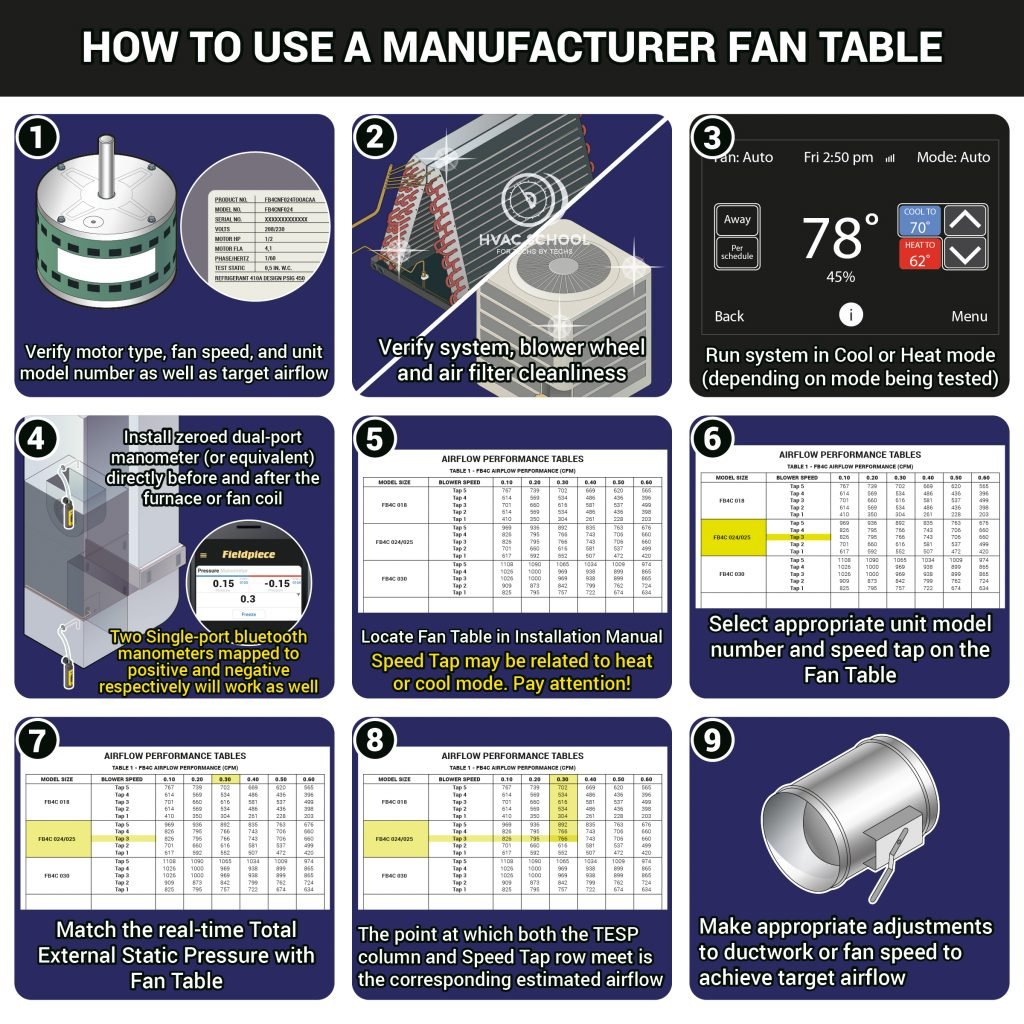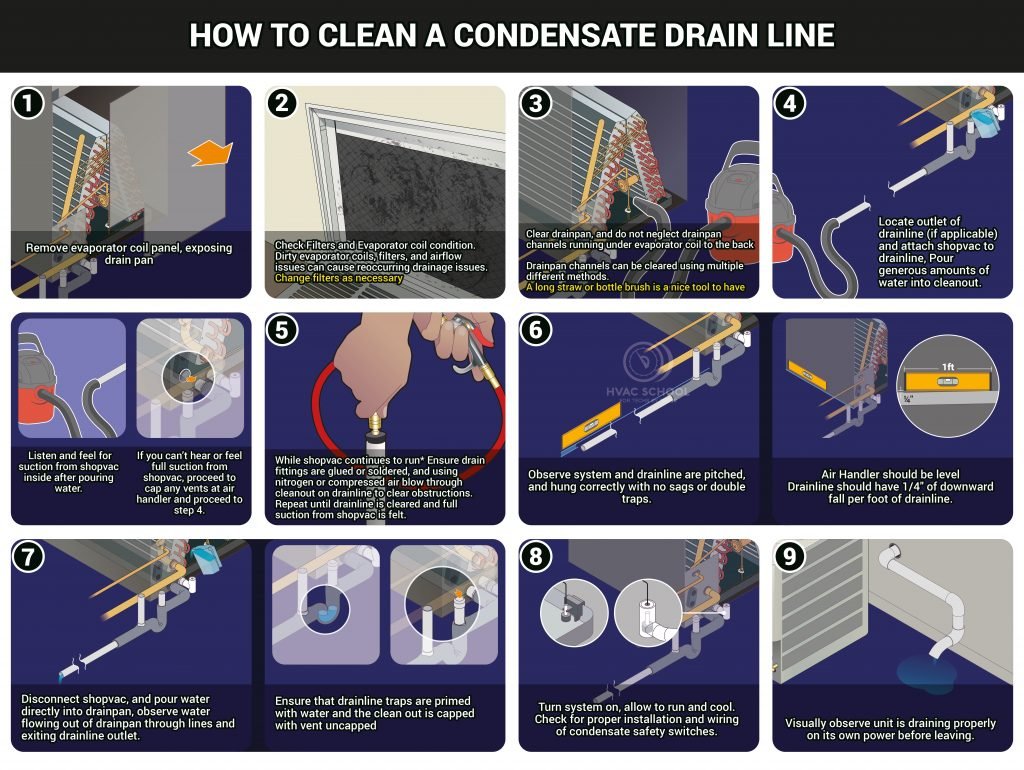Get Tech Tips
Subscribe to free tech tips.
Preventing Callbacks and Warranty Returns

“Haven’t you heard?! Air conditioning is a fundamental human right! If you don’t support my right to have air conditioning 24/7, then you’re an awful human being!”
Okay, that impression of an entitled customer is a bit of an exaggeration, but it is true that customers have high expectations for service workers.
But can we blame them for expecting service on-demand? Amazon Prime allows customers to ship items to their homes within two days! But instead of sitting there and pointing our fingers at society, we can do our best to minimize two of the most common causes of upset customers: callbacks and warranty returns.
However, customer dissatisfaction is NOT the only reason why callbacks and warranty returns are a pain in the neck. Callbacks and warranty returns affect everyone in the industry.
Customers often don’t make it easy for us. Quite a few of them have short attention spans or don’t even try to listen to us. Sometimes, they turn around and blame us even though they didn't do what we told them to do.
I think everyone can agree that minimizing callbacks and warranty returns would save a lot of headaches. We can only slash the number of callbacks if we commit to doing best practices and focus on communicating with customers effectively.
What are callbacks and warranty returns?
Simply stated, callbacks happen whenever a customer calls us back. The customer may feel that something isn’t right or may have a question. These may or may not have a warranty return involved, and many of them aren’t warrantable.
A callback may require somebody to go back out into the field and clean a drain line or fix something they didn’t initially fix on the equipment. However, customers may also need help programming their thermostat or have questions about their equipment; those also count as callbacks, as the time we dedicate to those services isn’t billable.
Callbacks are especially bad for contractors, as they have to eat a good portion of the costs associated with callbacks.
We see warranty returns when specific parts fail under warranty. The contractor may only make money from a service fee, but they’re likely to lose a lot of time (and money) from the administrative tasks that come with shipping parts.
The manufacturer also doesn’t make money from warranty returns; when you factor shipping expenses, “free” replacements, and likely negative customer opinion into the equation, both the manufacturer and contractor take a hit.
Who benefits from callback and warranty return prevention?
As I said before, both the manufacturer and contractor would benefit from callback and warranty return prevention. However, so many more people would benefit from callback prevention.
Obviously, customers would benefit from NOT having their A/C parts fail. That’s a given.
Technicians
The technicians also benefit from a lack of callbacks and warranty returns. Technicians already have very busy schedules, and callbacks and warranty claim-related calls just make their schedules even busier.
Working too many hours can cause a lot of stress (and may lead to unhealthy habits like eating junk food, smoking, and drinking alcohol). The stress may even strain relationships with family members. If we can reduce callbacks and warranty claims, then technicians may have an easier time managing their schedules and stress.
Contractors
Contractors suffer because callbacks and warranty claims don’t bring in money. Warranty claims may be reimbursed, but we don’t get the full reimbursement. Not to mention, callbacks and slow warranty processing times may reflect badly on the business in the customers’ eyes.
All of us with our boots on the ground know that the contractor can’t control the shipping times of warranty returns, but the customers often don’t understand that (and several of them just need to blame someone).
Distributors
The next step on the ladder is the distribution and wholesale people, the middlemen (and women) between the contractor and the manufacturer. They’re the ones who do a bulk of the processing on warranty returns, and they lose time and money. So, preventing warranty returns could allow them to spend more time selling and shipping new units and parts.
Manufacturers
Of course, the OEM would also benefit from fewer callbacks and warranty returns. Like everyone else on the ladder, they’re not making any money from a warranty claim. Not to mention, frequent callbacks and warranty returns make the manufacturer look bad. (We won't name and shame here, but I’m sure everyone reading this article groans whenever they see certain manufacturer names.)
The entire HVAC industry
Last but not least, the industry as a whole can benefit from fewer callbacks and warranty returns. When we show up to our install or repair jobs and use best practices, the results will speak for themselves. In the customer’s mind, a callback or warranty return means that we didn’t do our job right. Lots of bad experiences can make them think negatively about the trade as a whole.
When people think negatively about something, that’s when disrespect starts to morph into stereotyping and mistreatment of others. Since many people already tend to minimize the value of blue-collar workers and jobs, that’s the last thing we want to see.
Why is it important to prevent callbacks and warranty returns NOW?
Although it would obviously be ideal if we prevented callbacks and warranty returns all the time, the task is especially critical nowadays.
Unless you live under a rock, you’ve probably heard all about the supply chain slowdowns going on right now. The supply chain problems don’t just affect your Christmas shopping; they affect the speed at which HVAC parts arrive from point A to B as well.
Not to mention, the COVID-19 pandemic has also affected parts availability and shipping costs. We’ve seen several shortages throughout the COVID-19 pandemic (from toilet paper to dumbbells), and the HVAC industry has had its share of slim pickings. In instances where fewer parts are available, it takes longer and is more expensive to ship those parts.
Speaking of shortages, we’re currently having a tough time filling job positions in the United States, perhaps especially so in the HVAC industry. When contractors don’t have enough employees to respond to new service calls and callbacks, they end up losing money by prioritizing the callback, which doesn’t bring in money. So, there’s an opportunity cost associated with callbacks and warranty returns as well.
Not to mention, in the United States, the Fair Labor Standards Act (FLSA) requires employers to pay employees no less than 1.5x their hourly rate for hours worked beyond 40 per week (unless exemptions apply). Many HVAC technicians work more than 40 hours per week under normal conditions! So, contractors have to pay their technicians a lot more in overtime when callbacks pile up.
What are some common causes of callbacks and warranty claims?
I recently asked the HVAC School Facebook group members about the callbacks they see most often. Our “informal poll of technicians” found that ten common causes of callbacks and warranty claims were:
- Improper system setup
- Failing to test the whole system before leaving
- Misdiagnosis
- Condensate drain issues
- Miscommunication with the customer
- Forgetting to put the disconnect back in
- Improper low-voltage or thermostat wiring
- Dirty coils
- Improper refrigerant charge (leaky coils fall under warranty claims)
- Capacitor failure (warranty)
Lane Stout and Chris Caldwell also pointed out a common technician mistake that can lead to misdiagnosis: “Tunnel vision.” Techs may zero in on one issue during diagnosis and fail to address anything else that could be contributing to the problem.
Not to mention, some technicians accidentally leave their belongings at the job site. However, that’s a small annoyance compared to an unacknowledged wad of drain snot.
Overall, I think Daniel Garska put it best when he said, “Companies don’t charge enough and rush their guys.” Many others in the poll echoed his point, and I certainly agree that contractors are responsible for their technicians’ work. Training, setting performance standards, and treating technicians fairly are all responsibilities of the contractor.
How do we reduce callback rates?
I’ve already written an entire article dedicated to reducing callback rates. However, this topic never gets old, so I’ll explain how I think we can reduce callback rates by addressing the issues brought up in the poll.
Avoiding callbacks due to poor customer communication
One of the most common sources of callbacks, whether we have to return to the job site or not, is poor customer communication.
We aren’t in the hospitality business, but we still need to make sure our soft skills are up to par. That’s especially true of residential HVAC technicians. When I say “soft skills,” I’m referring to our abilities to be clear communicators and good listeners.
Customers sometimes like to talk our ears off. I understand the annoyance, but we’d be wise to pay attention to them; they could give us some critical information about the problem at hand when they describe how their comfort levels have changed.
If the customer is curious to know what you’re doing, it’s a good idea to explain your service procedures and even let them watch. Of course, even if they’re not interested and don’t have time to listen to you walk them through the whole process, it would be prudent to have a solid closing discussion.
At Kalos, we make sure our techs know the importance of closing out the job. We teach them to explain what they did and ask the customer if there’s anything that can be done to make the service call better; if the customer doesn’t mention anything else, then that’s on them.
We are also aware that customers aren’t always the best listeners. Even if you explain how to use a new thermostat verbally, it’s good to give the customers a visual guide or at least a list of steps in writing. That way, they won’t call back and ask how to work their newfangled thermostat.
It’s also a good idea to set expectations for the customer. If a customer just replaced their furnace with a heat pump, let them know that heat pumps can appear to “smoke” and may make loud noises when they shift into heat mode for the first time during the cold season. Customers are less likely to call back if they have realistic expectations for their system and know what sorts of “odd” things are actually normal.
Avoiding callbacks due to improper system setup

According to the commenters on our “informal poll of technicians,” the common source of callbacks appeared to be improper installation. Whether the commenters have personal vendettas against installers or not, the sad truth is that there are many bad install practices out there.
Ultimately, the way we prevent improper system setup from causing problems is by inspecting and testing the entire system before leaving a job, whether you’re working on a new install or a service call.
It’s good to check the electrical connections and components, which are also common sources of callbacks. Check that the DIP switches and pins are all set up correctly. The ECMs, controllers, and all other electrical components should also be set up properly. Test the condenser fan and make sure it’s not rotating backward.
Installers can prevent callbacks by making sure their commissioning practices are thorough. When commissioning, we set the airflow and balance the system before charging. We think of these as our ABCs: Airflow Before Charging. (We also accept the other ABCs: Airflow, Balancing, then Charging.)
Measure and set airflow appropriately
“Airflow” can refer to a few different things. We could be talking about airflow over the evaporator coil (blower motor) or airflow out of the condenser (fan motor). Both of those are important for proper system operation, so we need to make sure we set them both.
First of all, we’d be wise to use our most powerful (and least expensive) tools to monitor system operation: our senses. Run the HVAC system in all modes. Watch and listen to see if the motors are running. Listen for weird noises, which may indicate airflow restrictions. Throw your hand over the condenser fan to see if the air is warm.
Once your senses verify the basics of operation, it’s time to check the airflow by collecting data. We often check “airflow” with static pressure. Static pressure is a good indicator of airflow, but it doesn’t measure the actual airflow. Instead, static pressure measures the force of the air against the sides of the duct. It’s like your blood pressure in that it measures the force of a fluid against the walls (air in the duct or blood in your blood vessels), not the amount of fluid within the walls.
When we measure static pressure, we assume that the blower is already reaching its CFM targets. But we can’t use static pressure to find out the actual CFM per ton. A good way to get an actual airflow measurement in CFM is to use a flow grid, like the TrueFlow grid by The Energy Conservatory (TEC).
Overall, you can achieve the best airflow with good duct design, larger supply and return plenums, low filtration resistance (4” media filters or lower), and clean evaporators and blower wheels.
Proper Balancing
Balancing is where we analyze the ductwork and adjust dampers to meet the customer’s needs. If the Kalos techs need to make any changes to the duct, I require them to use an airflow hood to test performance before and after they make changes. Balancing can affect your static pressure, and you may no longer hit your target after opening and closing dampers. Airflow affects charging, so you’ll want to make sure you’re hitting your targets before you jump straight to checking and adjusting the charge.
Commissioning Best Practices
Setting airflow and balancing are just the beginning of commissioning. During installation, you’ll be joining copper line sets by brazing them. To avoid causing heat damage to the other components, you’ll want to cover those components with a wet towel or heat-blocking putty, like Refrigeration Technologies WetRag.
You’ll also want to flow nitrogen while brazing for the best results. If you don’t flow nitrogen, you can get a buildup of scale called cupric oxide, which can cause restrictions in the line set and present issues later.
You’ll also have to pull a vacuum for a pressure test. For absolute best results and leak indication, we recommend pulling down to 300 microns and making sure the vacuum doesn’t decay to 500 microns or more within 10 minutes. At the very least, make sure your vacuum is below 500 microns for best results. Quick decay indicates that a system has significant leaks, and it may cause trouble for the homeowner down the line.
We also have to make sure our unit placement, drain line placement, and line lengths all allow HVAC systems to work as they should. You don’t want to create restrictions or allow too much heat transfer where there shouldn’t be much at all.
Kaleb Saleeby wrote a thorough article on commissioning a residential split heat pump, and you can read that HERE. We’ve also released several videos about commissioning on our YouTube channel, including a Kalos meeting about commissioning best practices, a measureQuick commissioning walkthrough with Jim Bergmann, and a duct and ventilation commissioning conversation with Michael Housh and Neil Comparetto.
Avoiding callbacks due to improper refrigerant charge
Improper charge basically means that the refrigerant charge is too high or too low. Sometimes, that’s because technicians fail to check the charge when they’re at the job site, they lose some refrigerant when they hook gauges up to the system, or they add or recover charge without using a scale.
To me, those look like symptoms of a rushed or careless technician. My solutions require techs to slow down and consider what they’re doing. First of all, you’ve got to check the charge in the first place.
To prevent refrigerant losses from checking the charge, I’d recommend checking the charge without gauges (non-invasive testing). Non-invasive testing eliminates the risk of refrigerant loss, contamination, and leaving leaks at the Schrader cores. You’d be best off using highly accurate digital probes, and it also helps to have programs like measureQuick on hand.
When checking your temperatures, remember that superheat indicates how full an evaporator is and that subcooling refers to the amount of liquid stacked in the condenser. Both readings may help you figure out if you have too much or too little refrigerant charge. High superheat and low subcooling may indicate that you have too little refrigerant in the system. Low (or zero) superheat and high subcooling may mean that you have too much refrigerant charge.
You can prevent putting in too much charge by using a scale to weigh in the additional charge. In other words, don’t just chuck a bunch of refrigerant into a system and guesstimate it.
If you determine that you have a low charge, it’s time to figure out why that is. Sometimes, it’s because the installers have made a mistake. Other times, you likely have a leak on your hands. In that case, it’s best to take your time and check the system for leaks with an electronic leak detector. Check common leak areas first, such as flare fittings. If your detector picks up a leak, bubble-test it with a leak reactant to confirm the leak.
Avoiding callbacks due to improper drain setup
Once again, we arrive at the topic of drains. Drains back up easily, and that can be due to poor design, unfortunate climate conditions, or plain old neglect.
There shouldn’t be much of an excuse for bad drain setups. Although local codes vary, the International Mechanical Code (IMC) has several guidelines for best practices. For example, the IMC maintains that drains should have a minimum diameter of ¾” and should NOT be smaller than the drain pan outlet diameter (307.2.2). The IMC also specifies that the drain pitch should be at least 1%, which is 1/8″ fall for every foot of horizontal run. (However, we generally find that ¼” per foot of horizontal run leaves more wiggle room for errors.)
The IMC also sets standards for cleanouts, venting, condensate switches, and traps. By now, I’d also hope it’s common knowledge that double traps and capping vents are bad.
Cleaning drains (watch out for the Florida Condensate Snake)
Nobody likes to clean drains. I'll bet some people don’t clean drains at all. But it’s something we should do.
Drains can back up with all sorts of sludge and grime, whether that’s in the drain line or the drain pan.
Some humid areas, like Florida, have to face special challenges. One such challenge is bacterial zoogloea, also called “elephant snot,” “drain snot,” or the “Florida condensate snake.” We can sometimes combat bacterial zoogloea by adding copper in the drain line, but we MUST clean it out as soon as we see it. Otherwise, it can spiral out of control and clog up your entire drain.
On the other hand, people who live in cold climates may have to make sure their drain lines are properly insulated so that they don’t freeze during the cold season.
Commonly miscondemned parts

Condemning the TXV has become a bit of a meme in the HVAC community. Poor indoor airflow? Bad TXV. Low superheat? Bad TXV. Did the pizza suddenly disappear from the fridge overnight? I guess the bad TXV made the A/C unit come to life and steal the pizza.
In many cases where we blame the TXV, there are actually other issues to address. There are many plausible causes of low suction pressure, and the TXV probably isn’t number one or two on the list. (I’d definitely check for airflow restrictions and poor duct design before I’d consider the TXV.)
The same goes for the compressor, which is an expensive part that nobody wants to replace. What some people don’t realize is that compressor failure is relatively uncommon due to all the internal protections inside of the compressor. Many compressors have thermal overload protections inside them, so they shouldn’t get so hot that they fry themselves. One of those protections is a bimetallic disk that opens and breaks all legs of power when it warps under excessive heat.
Some of us may also condemn circuit boards more often than we probably should. After all, they’re mysterious boxes of dark magic—how do we even begin to troubleshoot those? Instead of giving ourselves headaches trying to understand circuit board problems, it’s easier to condemn the whole thing and let the manufacturer ship us a new one. But is that really the best we can do? I don’t think so.
In many cases, we only have to understand the inputs and outputs on a circuit board. Before condemning the whole thing, it would be worth your while to check that the inputs and outputs are all correct. If they’re not, you can adjust them and see if that fixes the problem. If there appears to be an issue beyond your scope, then you can justify a warranty claim.
What can manufacturers and distributors do better?
I think manufacturers and distributors will deal with fewer warranty claims if they start publishing visual guides for troubleshooting, not just text guides. Many technicians would probably have an easier time understanding graphics than walls of words in a manual, so they’d be more inclined to diagnose the system instead of filing a warranty claim.
For example, we post several multi-panel guides in our articles and on social media, which seem to help a lot of technicians because it shows them what to do instead of just telling them. If manufacturers can develop these, then contractors and technicians can use them for training purposes. Post-installation guides can also come in handy for customers. (These would include thermostat guides, explanations about what was done to their system, and so on.)
If possible, it would also help a lot if the warranty process could be initiated in the field via a mobile app. Ideally, the mobile app would also have checklists and graphic guides for the troubleshooting process to make sure technicians go through a full diagnosis before condemning a part. Then, if the part needs replacement after all that, the tech could get a jump on the warranty process.
The office staff could handle the paperwork, but if a technician could kick off the warranty replacement process in the field, they would save precious time. Starting the warranty claim process on the field would make technicians’ lives easier, make the customers happier, and reflect better on the manufacturer for having a streamlined process.
Overall, manufacturers can help out a lot by providing visual just-in-time education and allowing technicians to start the warranty process in the field.
Everything in this article is just to say that thoroughness is the key to reducing callbacks. On the technician and contractor side, we need to make sure we diagnose the system completely, do proper commissioning, have productive closing conversations with the customer, and train others to do those best practices.
On the manufacturing and distribution side, it would help if manufacturers made educational resources available online or on a mobile application. Making education accessible to technicians and customers is also the key to callback reduction. When we reduce callbacks and warranty claims, we make customers more satisfied. That, in turn, makes the HVAC industry a more reputable field and better place to work.













Comments
To leave a comment, you need to log in.
Log In